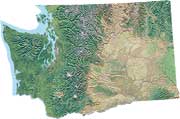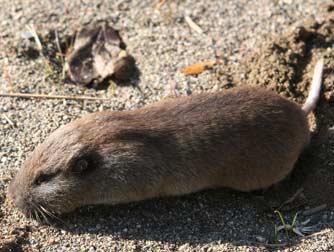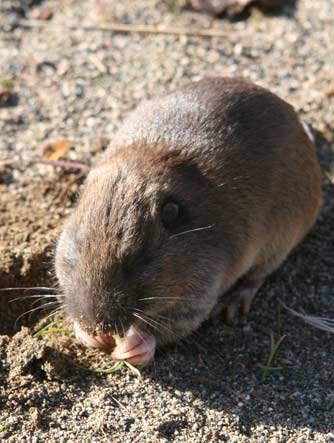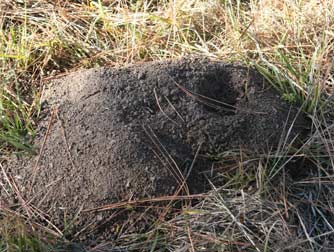The northern pocket gopher or Thomomys talpoides may be found in shrub-steppe, meadows, grasslands, pastures, farms and gardens in every county in eastern Washington.
Pocket gophers are named for the cheek pouches they use to store food. Gophers have small eyes and whiskers for navigating dark tunnels, small, rounded ears with a black patch behind, a short tail, sharp foreclaws, heavy jaw and large incisors to gnaw roots and to dig.
Pocket gophers feed on plants-- mainly the fleshy roots that are easily accessible underground-- though I've watched entire garlic plants get pulled underground and eaten. They're active year round digging, gnawing and eating. Pocket gophers dig extensive burrow systems that run a foot or two deep with shallow surface tunnels for feeding, and an urn-shaped nest cavity perhaps four feet underground, which may measure a foot wide, several feet tall, and radiating deep tunnels.
A variety of natural predators hunt gophers including the owl and hawk by air, bobcat, fox and coyote on the ground and digging out or hunting tunnels, the gopher snake, rattlesnake, weasel, skunk and badger.
Though sometimes an annoyance to gardeners, gophers do a ton of good by turning over and aerating the soil and providing a link in the food chain that supports other wildlife. For the smart gardener, gophers also provide an opportunity to fertilize deep with non-soluble phosphorus and potassium, right where roots need it most!





